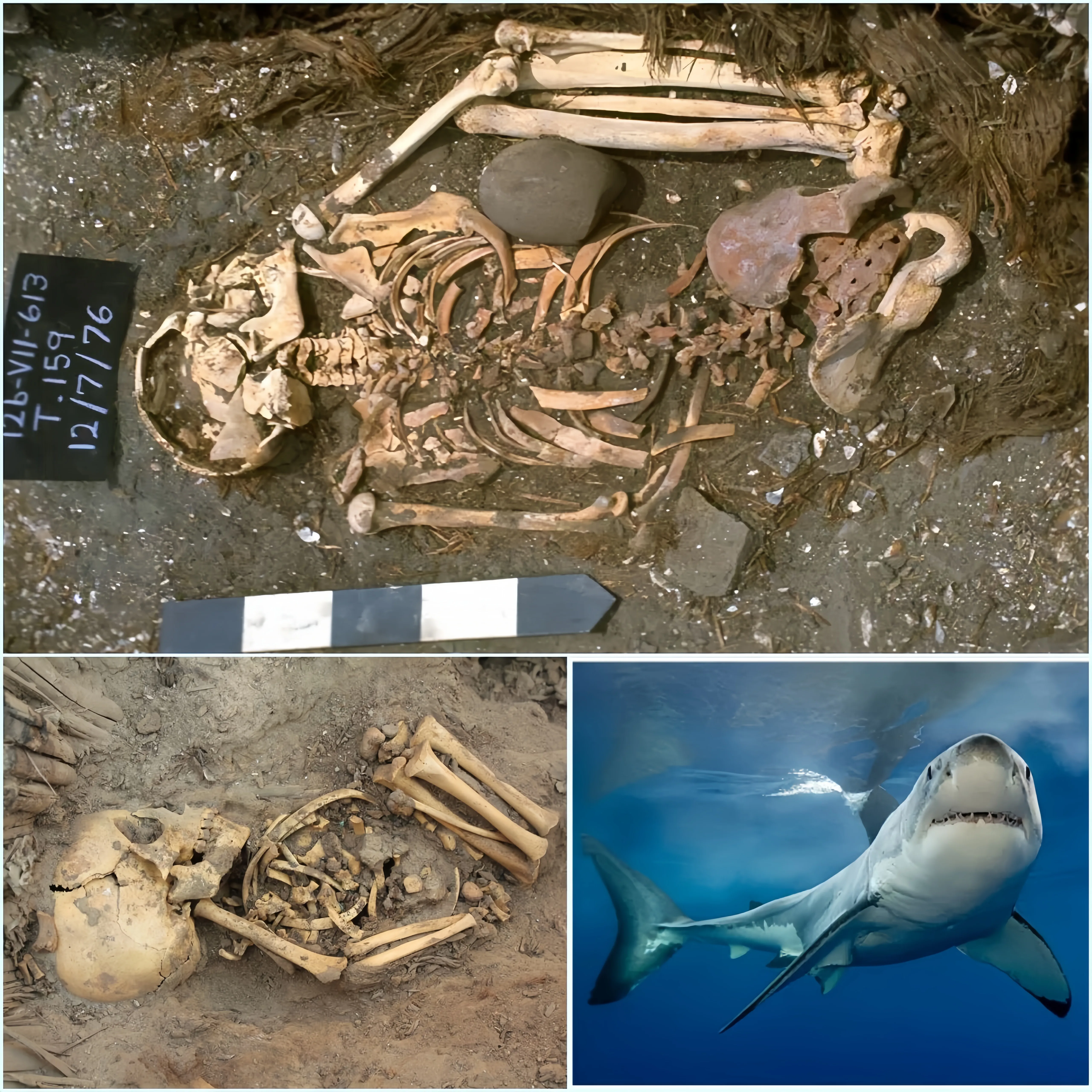
A skeleton of a teenage boy, approximately 6,000 years old, discovered in Peru during a 1976 excavation, may represent the oldest known case of a human killed by a shark. The boy’s remains showed evidence of a fatal shark encounter: his left leg was missing, and deep bite marks on his right hip and right forearm were consistent with shark bites, as described by bioarchaeologist Robert Benfer from the University of Missouri and anthropological archaeologist Jeffrey Quilter from Harvard University.
The radiocarbon dating of the skeleton indicates that the teenager died around 6,000 years ago. Interestingly, the burial of the boy was unconventional compared to others in his community, adding to the uniqueness of the discovery. This finding challenges previous assumptions about the history of shark-human interactions and sheds light on ancient practices and beliefs surrounding such events.





